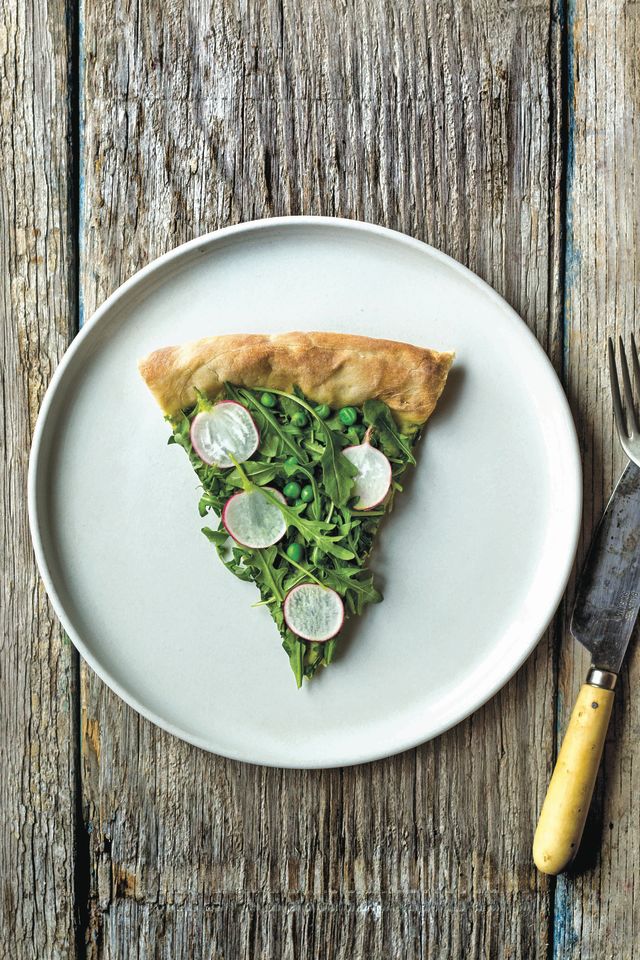Dishing Up the Dirt with Hood River Farmer and Blogger Andrea Bemis

How do you feel about deer? If your gut reaction is along the lines of “Aww, cute, Bambi,” you’re probably not a farmer.
“Deer have a tendency to gather in the fields in late evenings and early mornings, making a buffet of many of our plants and often trampling the rest,” Andrea Bemis writes in her debut cookbook, Dishing Up the Dirt. “The main solution is a proper deer fence, which hasn’t yet been in our budget, so when things get bad, we resort to camping out in the fields.”
Raised in Lake Oswego and educated at Central Catholic High School, Bemis didn’t grow up intending to spend her adult years staking out deer in damp fields of crops. In 2008, however, she and her now-husband, Taylor, impulsively decided to move cross-country to Taylor’s parents’ Massachusetts farm. After three years, the pair returned to Oregon to start their own business, Tumbleweed Farm, located outside of Hood River in the tiny town of Parkdale.
Along the way, Bemis began sharing her favorite farm stories and recipes on her blog, Dishing up the Dirt. Originally created for family and friends, the charming site caught the eye of the New York Times, Food52, and the Kitchn, among others. You might recognize Bemis from her Instagram, which currently boasts nearly 41,000 followers; she also partners with Portland-based Barre3 to provide wholesome recipes for their clients.
And Tuesday, March 14, marked the release of Bemis’s first cookbook, Dishing Up the Dirt: Simple Recipes for Cooking through the Seasons. Like her blog, the book is packed with rustic recipes made from seasonal ingredients grown by Bemis herself. It’s easy to imagine picking up a CSA box and immediately leafing through the cookbook for the best way to prepare beets (Bemis suggests beet, walnut, and kale “beetza”) or radishes (she recommends the miso and honey glaze).
Beautifully photographed by Bemis herself, the cookbook was largely developed and written over the farm’s three-month winter offseason. The rest of the year, Bemis and her husband are frantically busy growing acres of pesticide-free produce, which they sell to local restaurants, Hood River Farmers Market attendees, and 58 lucky CSA families, most of whom live in Portland. (The farm’s CSA program is currently booked up for the 2017 season, but fans can sign up online to be added to the waiting list.)
If nothing else, Dishing up the Dirt instills readers with a deep appreciation for the grueling, ceaseless work involved in growing organic vegetables. After reading the book, which features vivid vignettes of farm life between the recipes, it’s difficult to imagine how Bemis has time to eat or sleep, let alone write blog posts or cook wholesome, beautiful meals from scratch.
“There are days when we’re so overwhelmed with work, we have to make a sacrifice [and decide] like, what are we going to let die?” Bemis admits. But there’s one piece of good news—she finally has a way keep out those pesky deer.
“We got that deer fence,” Bemis laughs. “We’re not sleeping outside anymore. We’re getting too old for that.”
Spring Harvest Pizza with Mint & Pea Pesto
Bemis says: "This is everything a spring pizza should be: fresh, fragrant, and full of texture. Mint with peas is one of my favorite flavor combinations, and this pizza never disappoints. The pesto goes a long way, and leftovers make a great dip for crackers or veggies."

Spring Harvest Pizza
Image: Andrea Bemis
Mint & Pea Pesto
- 2 cups fresh shelled peas, blanched, or thawed frozen peas
- 6 tablespoons pine nuts
- ¼ cup fresh mint leaves, roughly chopped
- 2 cloves of garlic, chopped
- ¼ teaspoon fine sea salt
- ¼ cup freshly grated Parmesan cheese
- ⅓ cup extra-virgin olive oil
- 1 tablespoon fresh lemon juice
Pizza
- 1 ball of Chesua’s Perfect Pizza Dough (page 41 in Dishing Up the Dirt) or store-bought pizza dough
- extra-virgin olive oil
- ½ cup freshly grated mozzarella cheese
- ¼ cup freshly grated Parmesan cheese, plus additional for serving
- 2 radishes, thinly sliced
- 1 cup fresh arugula
- squeeze of fresh lemon juice
- fine sea salt and freshly ground black pepper
Preheat the oven to 425°F and line a baking sheet with parchment. Set aside 3 tablespoons of the peas and 2 tablespoons of the pine nuts to use as topping.
Make the pesto: Combine the remaining peas with the mint leaves and garlic in the bowl of a food processor. Pulse until a paste begins to form. Add the salt, the remaining ¼ cup pine nuts, and the Parmesan; with the motor running, drizzle in the oil, scraping down the sides. Add the lemon juice, taste, and adjust the seasonings if needed.
Roll out your pizza dough on a lightly floured surface. Transfer the dough to the baking sheet. Drizzle a little olive oil over the dough and bake until it is lightly browned, about 10 minutes. Spread the pesto evenly over the surface, leaving about a 1-inch border. Evenly distribute the mozzarella and Parmesan, then the reserved peas and pine nuts. Place the pizza back in the oven and bake until the cheese has melted and the crust is a deep golden brown, 4 to 7 minutes longer.
Let the pizza cool slightly. Top it with radishes, arugula, a drizzle of olive oil, the lemon juice, salt, pepper, and additional grated Parmesan.




